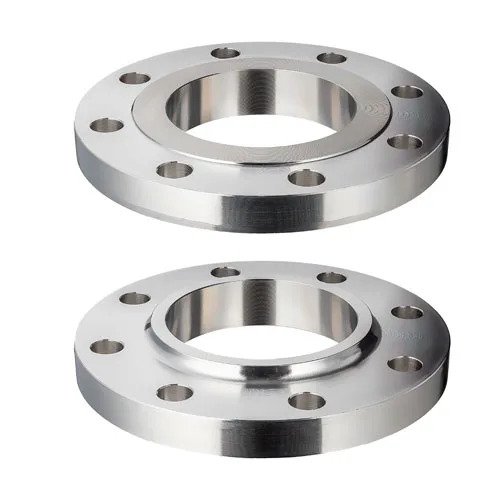Slip on flange are one of the most commonly used types of flanges in piping systems due to their ease of installation and cost-effectiveness. These flanges are often chosen for their simplicity, providing a reliable and secure connection in various industrial applications. In this detailed guide, we’ll walk you through the entire process of installing a slip-on flange, from preparation to final installation. Whether you’re a novice or an experienced professional, this blog will provide you with step-by-step instructions and helpful tips for achieving the best results.
Before we get into the installation process, let’s briefly touch upon what slip-on flanges are, why they are chosen, and where they are typically used. This knowledge will give you a better understanding of their benefits and applications.
What is a Slip-On Flange?
A slip-on flange is a type of flange that is designed to slide over the pipe, hence the term “slip-on.” These flanges are typically used in low-pressure and low-temperature applications, providing a solid connection between the pipe and the flange. They are relatively easy to install, making them a popular choice in various industries such as construction, manufacturing, oil and gas, and petrochemical applications.
Why Choose Slip-On Flanges?
There are several reasons why slip-on flanges are preferred in many industries:
- Easy Installation: The design allows the flange to slip over the pipe, which simplifies the alignment and reduces the effort required to secure the connection.
- Cost-Effective: Compared to other flanges, slip-on flanges are generally more affordable due to their simple design and ease of manufacturing.
- Versatility: Slip-on flanges are compatible with a wide range of materials and pipe sizes, making them suitable for a variety of applications.
- Reduced Need for Special Equipment: Since the flange slides over the pipe, no special equipment or machining is typically required during installation, reducing installation costs and time.
Now that we’ve covered the basics, let’s dive into the installation process.
Step-by-Step Guide to Installing Slip-On Flanges
Installing a slip-on flange may seem like a straightforward process, but it’s important to follow the proper steps to ensure a secure, leak-free connection. The following sections will guide you through each stage of the installation process.
Step 1: Preparation
Materials and Tools Needed
Before you begin the installation, gather all the necessary materials and tools. Here’s a checklist to ensure you’re fully prepared:
- Slip-On Flange: Choose the correct size and type based on the pipe specifications.
- Piping: The pipe that will be connected to the flange.
- Gasket: A suitable gasket should be used to ensure a leak-free seal.
- Bolts and Nuts: Make sure you have the correct size and quantity.
- Wrench: A wrench is required for tightening the bolts.
- Pipe Support: If necessary, use pipe supports to secure the pipe during installation.
- Measuring Tools: A tape measure and caliper will help with precise measurements.
Check the Pipe Alignment
Before installing the slip-on flange, ensure that the pipe is properly aligned. Misalignment can cause difficulties when fitting the flange and lead to leaks. Double-check the following:
- The pipe should be free of any debris or rust.
- The ends of the pipe should be clean and smooth.
- Ensure that the flange will slide onto the pipe with no resistance. If there is any obstruction, remove it before continuing.
Step 2: Slide the Slip-On Flange Over the Pipe
Once everything is prepared, it’s time to begin the installation. The first step is to slide the slip-on flange over the pipe. This is typically done by simply slipping the flange onto the pipe’s end. However, it’s crucial to ensure the following:
- Positioning: Align the flange with the pipe so that it sits flush and evenly. It should be snug but not too tight to prevent any issues during the bolting process.
- Orientation: Ensure that the flange is oriented in the correct direction, with the bolt holes positioned correctly to match the other flange or fitting you’ll be connecting to.
Tip: If you find it difficult to slide the flange onto the pipe, lightly tap it with a rubber mallet. Avoid using a metal hammer, as it could damage the flange or pipe.
Step 3: Install the Gasket
A gasket is essential for ensuring a tight, leak-proof seal between the slip-on flange and the pipe. The gasket is placed between the mating surfaces of the flange and the pipe to prevent leaks due to pressure or temperature changes.
Types of Gaskets
There are various types of gaskets available, and the choice will depend on the specific application. The most common types include:
- Rubber Gaskets: Suitable for lower pressure systems.
- Metal Gaskets: Used in high-pressure or high-temperature systems.
- Spiral Wound Gaskets: Often used for sealing in more demanding applications.
Tip: Always ensure that the gasket is the correct size for your flange and pipe. It should completely cover the mating surface to form an effective seal.
Step 4: Position the Flange and Gasket
Once the gasket is in place, position the slip-on flange with the gasket on the pipe. Make sure the flange is aligned correctly, with the bolt holes matching the holes in the connecting flange.
You might need to use a pipe support to hold the pipe in place while you complete the next steps. This helps to avoid any unwanted movement that could compromise the alignment.
Step 5: Insert Bolts and Tighten
With the flange and gasket in position, it’s time to insert the bolts into the flange holes. This is a crucial step in ensuring the connection is tight and secure.
Step-by-Step Bolting Process:
- Insert the Bolts: Carefully insert the bolts through the holes in the flange.
- Hand Tighten: Begin by hand-tightening the bolts to ensure they hold the flange in place. Do not fully tighten at this stage.
- Use a Wrench: Once the bolts are in place, use a wrench to tighten them in a crisscross pattern. This ensures even pressure distribution and prevents warping of the flange.
- Tighten Evenly: Tighten the bolts progressively in a star or crisscross pattern. This prevents uneven pressure and ensures the gasket is evenly compressed.
- Final Tightening: Once all bolts are tightened, double-check to ensure they are secure but not over-tightened.
Step 6: Pressure Test the Installation
After the slip-on flange is installed and tightened, it’s important to perform a pressure test to check for leaks. This can be done by pressurizing the pipe and inspecting the joints for any signs of leakage.
- Visual Inspection: Look for any visible signs of leakage around the flange.
- Leak Detection Fluid: You can use a leak detection fluid to pinpoint any potential leaks.
If any leaks are found, loosen the bolts, reposition the gasket, and retighten the bolts until the leak is sealed.
Frequently Asked Questions (FAQs)
1. What is the main difference between a slip-on flange and a weld neck flange?
The primary difference between a slip-on flange and a weld neck flange lies in the way they are attached to the pipe. A slip-on flange simply slides over the pipe and is secured with bolts, while a weld neck flange is welded to the pipe for a more permanent connection.
2. Can slip-on flanges be used in high-pressure systems?
While slip-on flanges are suitable for low to medium-pressure systems, they may not be ideal for very high-pressure applications. For such systems, flanges with stronger and more secure attachments, such as weld neck flanges, are often preferred.
3. Are slip-on flanges reusable?
Yes, slip-on flanges can be reused if they are in good condition. However, the gasket typically needs to be replaced with each use to ensure a proper seal.
Conclusion
Installing a slip-on flange is a straightforward process that, when done correctly, provides a reliable and leak-free connection for pipes. By following the step-by-step guide provided in this blog, you can ensure that the installation is done safely and effectively.
Always make sure to gather the correct materials, double-check the alignment, and use the proper techniques for tightening and pressure testing. Proper installation not only extends the life of the piping system but also ensures optimal performance.
For more information on slip-on flanges and related products, check out our flange products page.








